Here are the answers to our I Love a Mystery Photo Contest! We thank everyone who took part. John Nicholson submitted the best overall entry, getting 14 out of the 15 puzzlers correct, so he is our contest winner. John’s answers are given in each photo caption.
Note the close resemblance between photo #1 and this shot of the station near the end of service. Different angle, but same station, same building, same railroad.
We hope you have enjoyed this contest, and will watch this space for our next helping of Transit Trivia. If you did not get all the answers, well, better luck next time!
-David Sadowski
PS- We borrowed our headline title from the old-time radio series I Love a Mystery, which you can read about here.
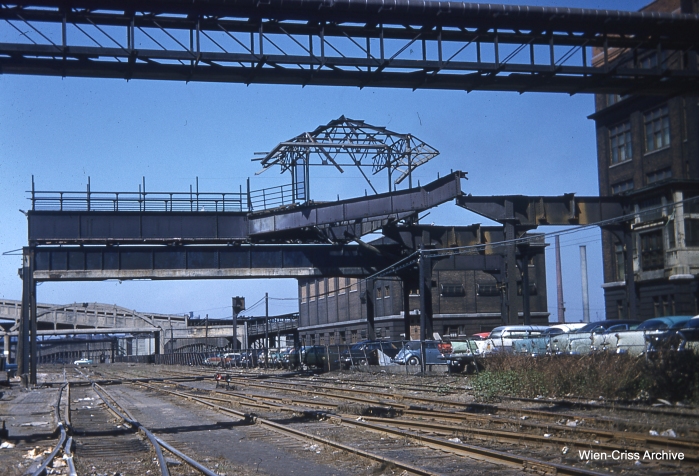
#1 – “Remnants of the Swift & Co. station on the Stockyards branch.” This photo was taken about one year after CTA service ended on October 7, 1957. (Photo by Charles L. Tauscher, Wien-Criss Archive)
Here is another view of the Swift station, from yet another angle, showing how everything looked around the time the single-track Stockyards branch line opened in 1908:

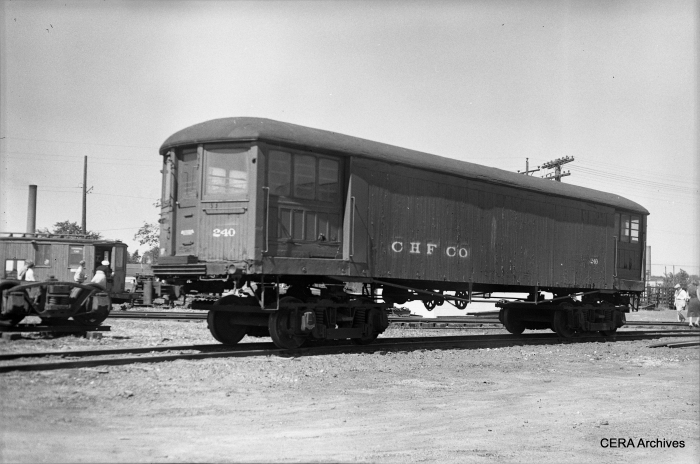
#2 – “Former CNS&M MD car purchased by Frank Sherwin of Chicago Hardware Foundry. Repainted and lettered as a CHF storage car.” The Chicago Hardware Foundry in North Chicago was the original home of the Illinois Electric Railway Museum, today’s IRM. (Photographer unknown)
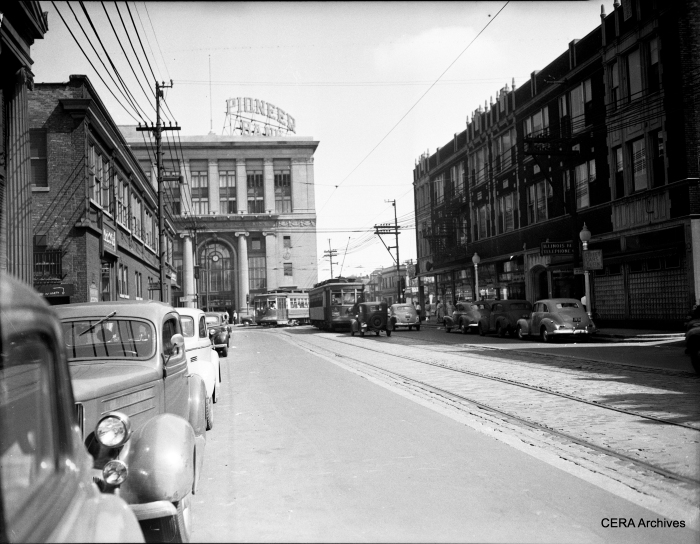
#3 – “We’re on Pulaski looking north to North Ave. There was a slight jog on Pulaski before reaching North Ave., Pioneer Bank on the NW corner of North and Pulaski was a local landmark.” (Photographer unknown)
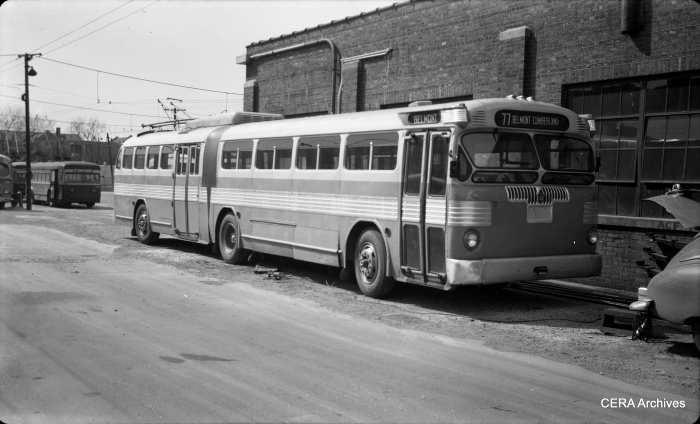
#4 – “The famous Queen Mary taken in 1948 or shortly thereafter; it was converted into an electric bus in 1948.” This photo was taken in March 1949. It’s been suggested that this is at the North Avenue garage. As a trolley bus it was numbered 9763, making it the highest numbered Chicago tb. (Photographer unknown)
You can see another view of CTA 9763 in service here.

#5 – “This is a southbound Jackson Park train at the Merchandise Mart station.” (CRT 4296 on July 2, 1940.) The sign just behind the train says “Kinzie,” yet that was not the name of the station when this picture was taken. (Photographer unknown)

#6 – “This is the Cook County Hospital car that transported patients between Cook County Hospital and the Chicago State Hospital. It also made trips over connecting interurban lines.” (The car was called Cook County No. 1 – see our sidebar below.) (Photographer unknown)
More info about Cook County No. 1 from:http://forgottenchicago.com/forum/5/10734/10916/re__dunning_insane_asylum
One of the more interesting facets of Chicago State Hospital was Cook County Car No. 1. From 1918 to 1939, this 60,000-pound interurban type car made weekly trips, carrying mentally ill patients from the Cook County Hospital to Dunning Hospital. For many patients this was their last journey, as many would be warehoused at this hospital for the remainder of their lives.
Cook County Car No. 1 was built in 1918, at the West Shop of the Chicago Surface Lines. The Glowczewski family, who lived on the Northwest Side of Chicago for many years, remembers it, “being painted an ugly dark green with oversized wheels, and it moved like a Sturmorser tank along Irving Park Road.” The car had separate sections for the male and female patients. The female patients were closest to the motorman.
Once inside Cook County Car No. 1, one would find sleeping berths, leather reclining chairs and small cabinets. Usually the crew consisted of two attendants, a nurse, and a physician. Unruly or agitated patients were strapped to the beds. Patients who were infirm were removed by wheel chairs and stretchers upon reaching Dunning Hospital. When the car’s work was finished, it would return to the old Kedzie station at Kedzie and Van Buren via Irving Park Road to Milwaukee Avenue (Six Corners), to California Avenue to Chicago Avenue, west on Chicago to Kedzie, and then subsequently, to the Kedzie depot.
Two Irish lads regularly piloted the hospital trolley from its inception of service in 1918, to its last run o May 18, 1939. They were motorman Danial O’Brien and conductor Patrick Gibbons. Since it was of no value to the Surface lines, Cook County Car No. 1 was scrapped in late 1939. Starting in 1940, a $17,000 gas bus brought patients from the Cook County Hospital to Chicago State Hospital.
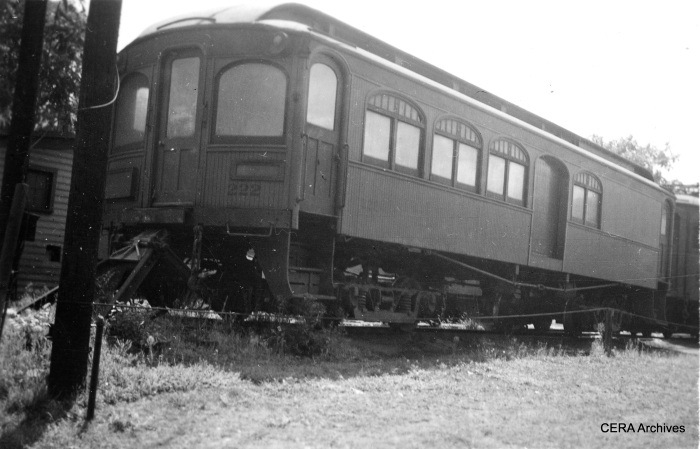
#7 – “Car 222 at Michigan City; it was converted by CSS&SB to a way and structures vehicle and later a newspaper car.” (Photographer unknown)
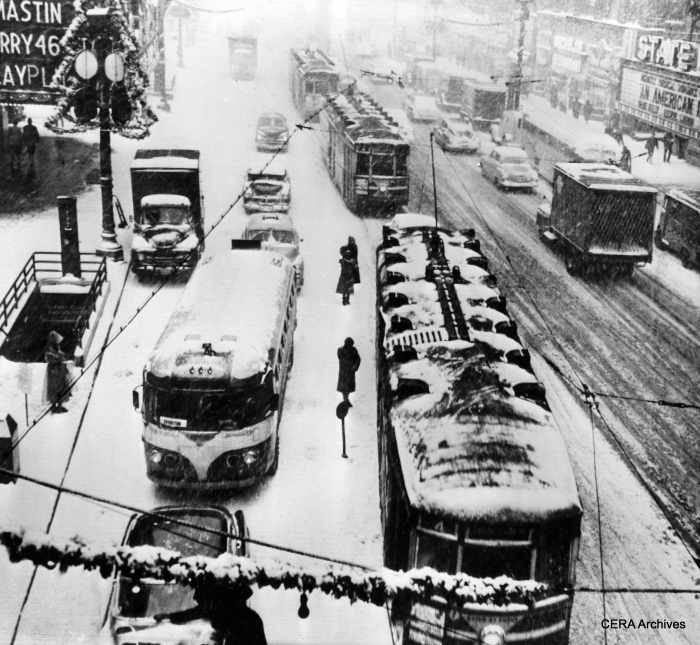
#8 – “Looking south on State St. from the State-Lake “L” station. Christmas decorations are up, An American in Paris (release date 11/11/51) is playing at the State Lake Theater. There were several days of very heavy snowfall just before Christmas so I would say this photo dates to around the third week of December 1951.” (The actual date is December 14, 1951.) (Photographer unknown)
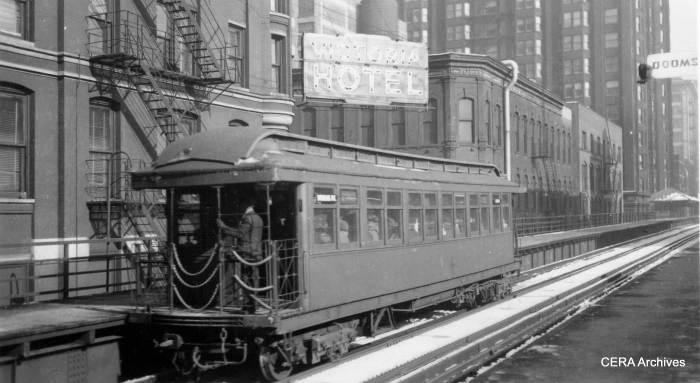
#9 – “LaSalle & Van Buren” Clues include some of the early skyscrapers, the Victoria Hotel, and the continuous platform. (Photographer unknown)
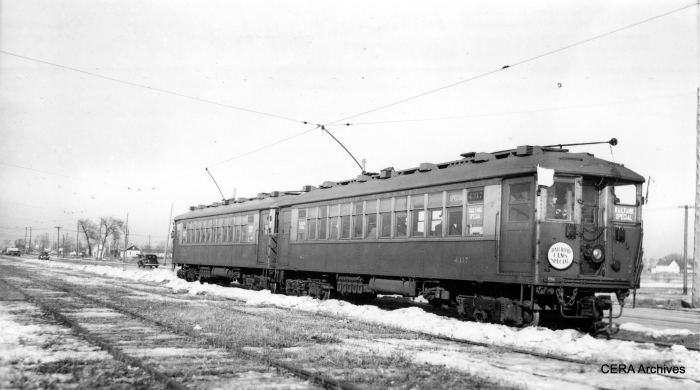
#10 – “CERA trip #6 on 2/12/39 taken along Mannheim Rd. on the Mt. Carmel/Cook County branch of the CA&E.” (Photographer unknown)
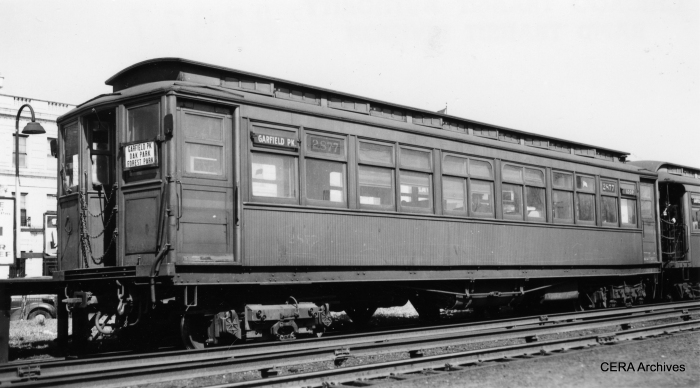
#11 – “This is a Garfield “L” train at Oak Park Ave. (CA&E trackage where CRT had trackage rights).” The clue is the building in the background. (Photographer unknown)
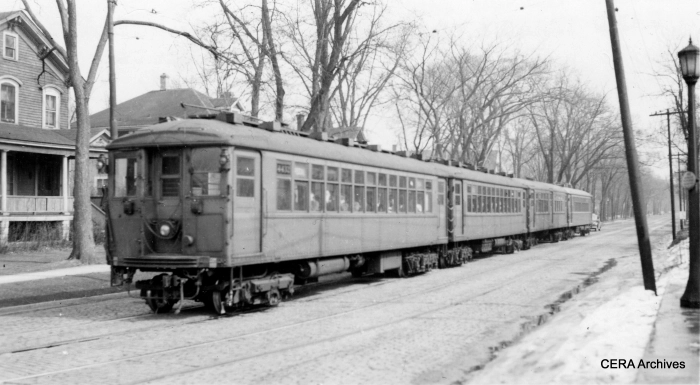
#12 – You’d think the CRT 4000s were never used in interurban or street railway service, yet here we are. “Military special is on North Shore Line trackage on Greenleaf Ave. in Wilmette circa 1942.” (Photographer unknown)

#13 – CSL 6201 at 130th and Indiana on October 17, 1941. Only Charles Amstein got this one right. (The info written on the back of the photo, apparently was incorrect- we received a correction from Roy Benedict.) (Photographer unknown)
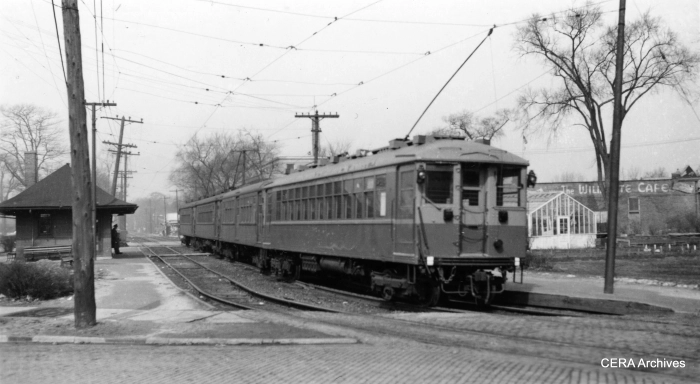
#14 – “Military special at the Wilmette Ave. station in Wilmette on the North Shore Line.” (Photographer unknown)
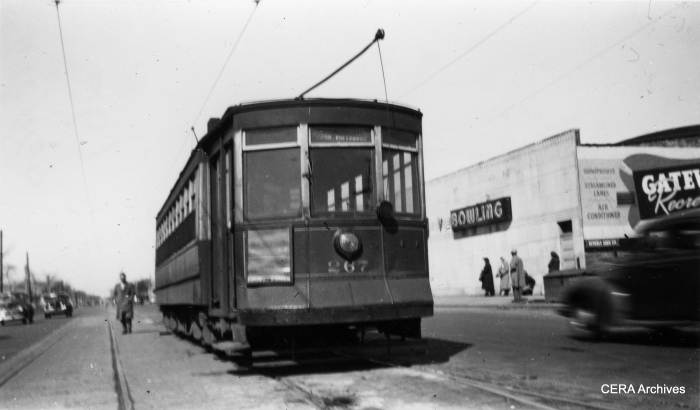
#15 – “End of the North Ave. line at Narragansett.” (The clue is the Gateway Bowl sign.) Streetcar service was extended here on November 29, 1931, and was replaced by trolley buses on July 3, 1949. (Photographer unknown)